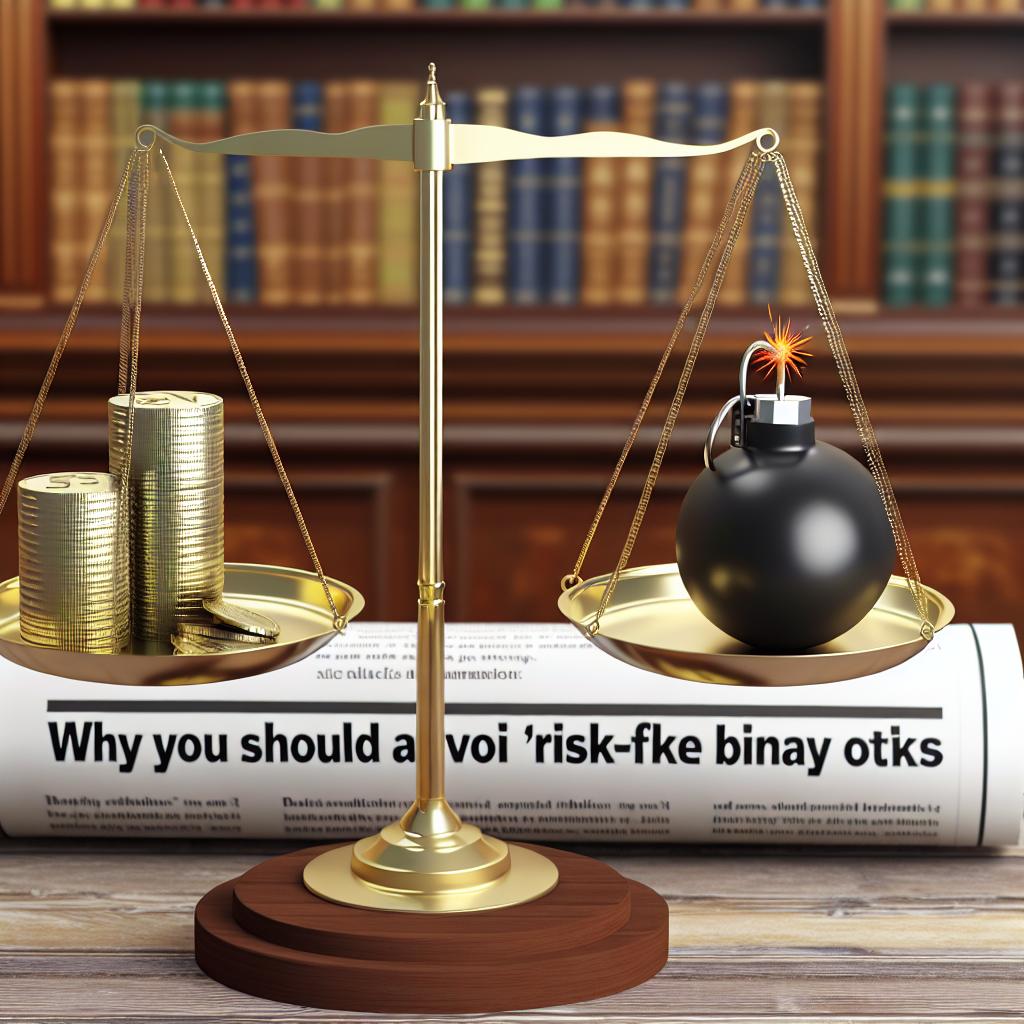Why You Should Avoid “Risk-Free” Binary Options Offers
Understanding Binary Options
Binary options are financial instruments that offer investors a straightforward mechanism to speculate on the price movements of various underlying assets. These typically include commodities, stocks, indices, and currencies. The defining feature of binary options, as is suggested by their name, is the binary outcome inherent in every trade: when the contract expires, the investor either receives a predetermined, fixed amount of money or loses the initial stake they placed on the trade. This simplicity in execution and potential for quick returns have made binary options an appealing choice for many traders. However, this form of trading is generally high-risk and highly speculative, attracting both seasoned investors seeking substantial returns and novices lured by marketing promises of quick profits.
The Appeal of “Risk-Free” Offers
In the world of binary options, some companies utilize marketing strategies that attract investors by promoting the idea of “risk-free” trading. These offers suggest a form of security in trading that is often attractive to those unfamiliar with the full scope of trading risks. The allure comes from the desire to participate in financial markets without the fear of incurring losses. However, the reality behind these offers is frequently far from the promotional claims. Essentially, terms such as “risk-free” become marketing buzzwords designed to attract the unwary investor into a web of potentially exploitative practices. Understanding the deception in these claims can provide the first line of defense for investors against unwarranted losses.
The Reality of Binary Options
When looking past the marketing antics, the true nature of binary options trading surfaces. Trades in binary options are essentially bets on the short-term price direction of the underlying asset. The investor speculates whether the price of the asset will go up or down within a specified period. If the prediction is correct, the trader receives a payoff, usually a set percentage of the initial investment. However, if the prediction is wrong, the trader loses the entire amount wagered on the trade. This all-or-nothing mechanism means that while the upside can be attractive, the risks are equally pronounced.
Predicting short-term market movements accurately is no small feat, even for veteran traders. It involves not just knowledge of the market but also the ability to read charts, understand data, and sometimes anticipate the impact of unforeseen economic events. Despite promotional material often depicting binary options trading as a simple, near-foolproof method of achieving financial gain, the success probability is frequently portrayed more optimistically than the reality justifies.
The notion of high returns being delivered without risk is dubious in any financial product. In reality, binary options carry inherent risks that cannot be eliminated merely through marketing claims. Investors should recognize the nature of their investment: if something seems too good to be true, it likely is.
Hidden Terms and Conditions
The “risk-free” offers associated with binary options often come with intricate terms and conditions that usually remain buried in the fine print. These terms typically require traders to fulfill specific, often stringent criteria before any gains can be realized. For example, a trader might be asked to trade a certain volume—in some cases several times the initial deposit—before becoming eligible to withdraw any earned profits. Such conditions effectively serve as barriers, designed to consume the trader’s funds within the trading platform before they can claim their apparent “risk-free” gains. This practice not only diminishes potential profits but can also confuse and frustrate the investor, leading to an erosion of trust in financial markets.
Regulatory Concerns
Understanding the regulatory landscape is crucial for anyone considering binary options trading. Numerous financial regulatory bodies worldwide have issued warnings about binary options, highlighting their potential for financial scams and staggering losses. In some jurisdictions, stringent regulations have been put in place to protect investors, particularly retail traders. In other regions, binary options marketing is completely banned, reflecting the high-risk nature of these investments and the potential for deceptive practices.
Investors must be aware of the legal status of binary options in their specific locale. Engaging in thorough due diligence on any company offering binary options is vital. Such diligence not only involves assessing the legitimacy of the firm but also understanding its regulatory compliance.
Conclusion
Binary options present a trading mechanism that, on the surface, appears simple and potentially lucrative due to quick executions and straightforward outcomes. However, their inherent risks make them unsuitable for many investors. The promises of “risk-free” returns are misleading and often form part of elaborate schemes to entice inexperienced investors into risky trade interactions. Before engaging in binary options trading, potential investors should exercise caution, conduct comprehensive research, and develop a thorough understanding of the genuine risks and potential rewards associated with these financial instruments.
In essence, a robust understanding of binary options and a skeptical approach to marketing claims are essential for protecting one’s investments. The seemingly straightforward nature of binary options can obscure the complexities and potential pitfalls embedded in their framework. Therefore, a well-informed strategy and cautious planning should underpin any decision to trade in binary options, ensuring that the excitement of potential gains is managed alongside the understanding of significant risks involved.
This article was last updated on: April 7, 2025

